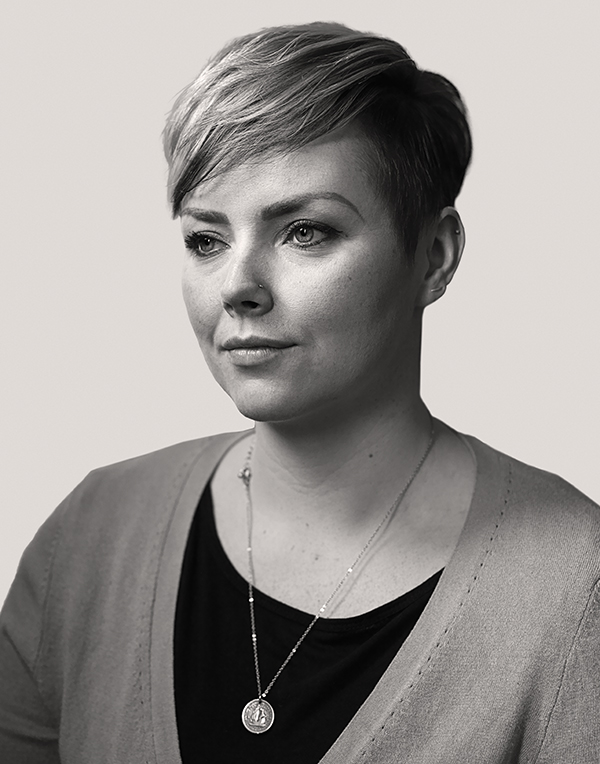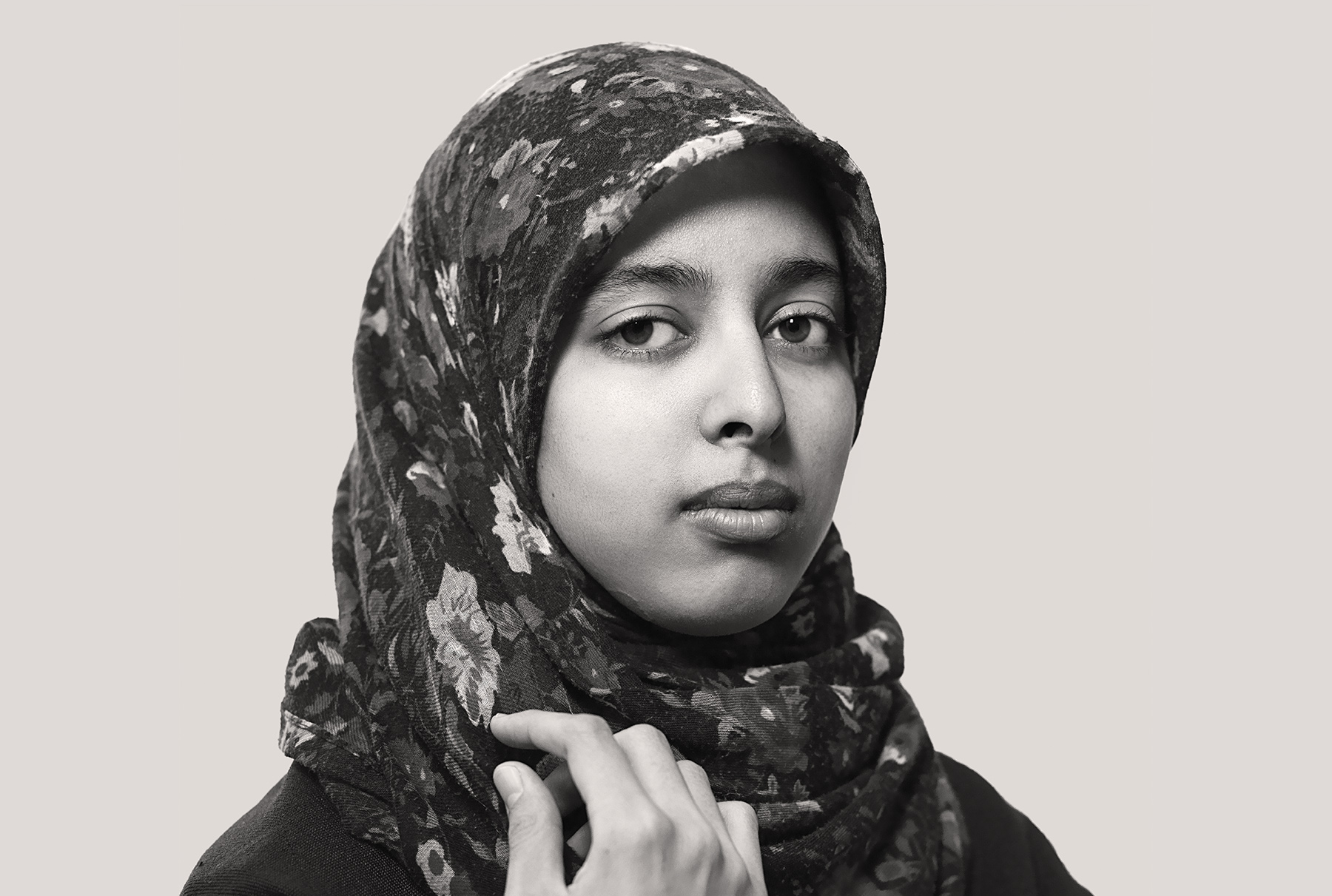
Sara Hassan, MRU student starting Fall 2016
Spring 2016 issue
Muslim women lead the conversation
It’s just before Christmas — a Western-Christian-based holiday, widely observed at most Canadian post-secondary campuses — and a group of Muslim women appear on Mount Royal University’s Main Street with hijabs on head and in hand for anyone who wants to try one on.
As students and professors hustle down the hall — some en route to class, the Library, the gym, others perhaps on the way to the campus pub to throw a few eggnogs back with friends before the holiday break — the women beckon them to stop, hang out for a few minutes and try on a hijab while shooting the not-so-proverbial s#*! about the extremely personal topic, that is — gulp — religion. And not just any religion — double gulp — Islam.
“Do you have to shower in that thing?”
“Does your father or brother or husband make you wear it?”
The women spend the afternoon answering often awkward, sometimes politically incorrect, occasionally blunt queries.
“Like around the idea that we’re all oppressed,” says Asma Chaudhry, co-organizer of Calgary’s Je Suis Hijabi, or the I Am Hijabi campaign. But, she says the group doesn’t mind the questions. In fact, they are anxious to address misconceptions.
“People confuse culture with religion all of the time. There are cultures around the globe — and groups, some of which are Muslim — who do oppress women. But, that’s not part of the religion. It’s part of those people’s culture. Not mine,” says Chaudhry, who has been wearing the hijab since high school, when she says she decided the time was right.
“Let me be the first to clarify, we don’t have to shower in it.”
“I was asked about that once. But you know what? That’s okay, because I would much rather people ask the questions they’re wondering about than assume the wrong information. And, my dad is respectful of my choice to wear it, or not wear it.”
Asma Hanif, a Mount Royal Bissett School of Business student and supporter of the Je Suis Hijabi group, does not wear the covering.
“I don’t know if I’ll ever decide to wear it. I want to see how I feel after marriage — getting married is a big deal to us Muslim girls, you know,” says the 23-year-old with a smile.
“My parents are fine either way. My friends don’t care. I’ll do what I want and I don’t have to decide now.”
That might be the biggest misconception about the whole heady affair, explains Danial Khan. As a Muslim male, the 21-year-old Mount Royal General Science major student says it concerns him that people think he’s got an opinion on what the women in his religious community “get up to.”
“This is my whole philosophy on the hijab: I don’t have a philosophy. To me, this is a personal activity and frankly, it’s none of my business. I don’t want to make it sound like I, or other Muslim males, are oblivious to some of the issues facing Muslim society right now. I know that the hijab is enforced in some Muslim countries and these extreme views may find their way into Canada among particularly conservative families. However, thanks to events like Je Suis Hijabi, we know that there are women who wear the hijab with pride and, as a society, we can’t paint every woman who practices this aspect of her faith as ‘oppressed.’ It’s simply my job as a Muslim male to uphold and promote the values of the Qur’an, which says ‘there is no compulsion in religion,’ ” he says. “I don’t treat women differently who wear it or don’t wear it. I don’t really think about.”
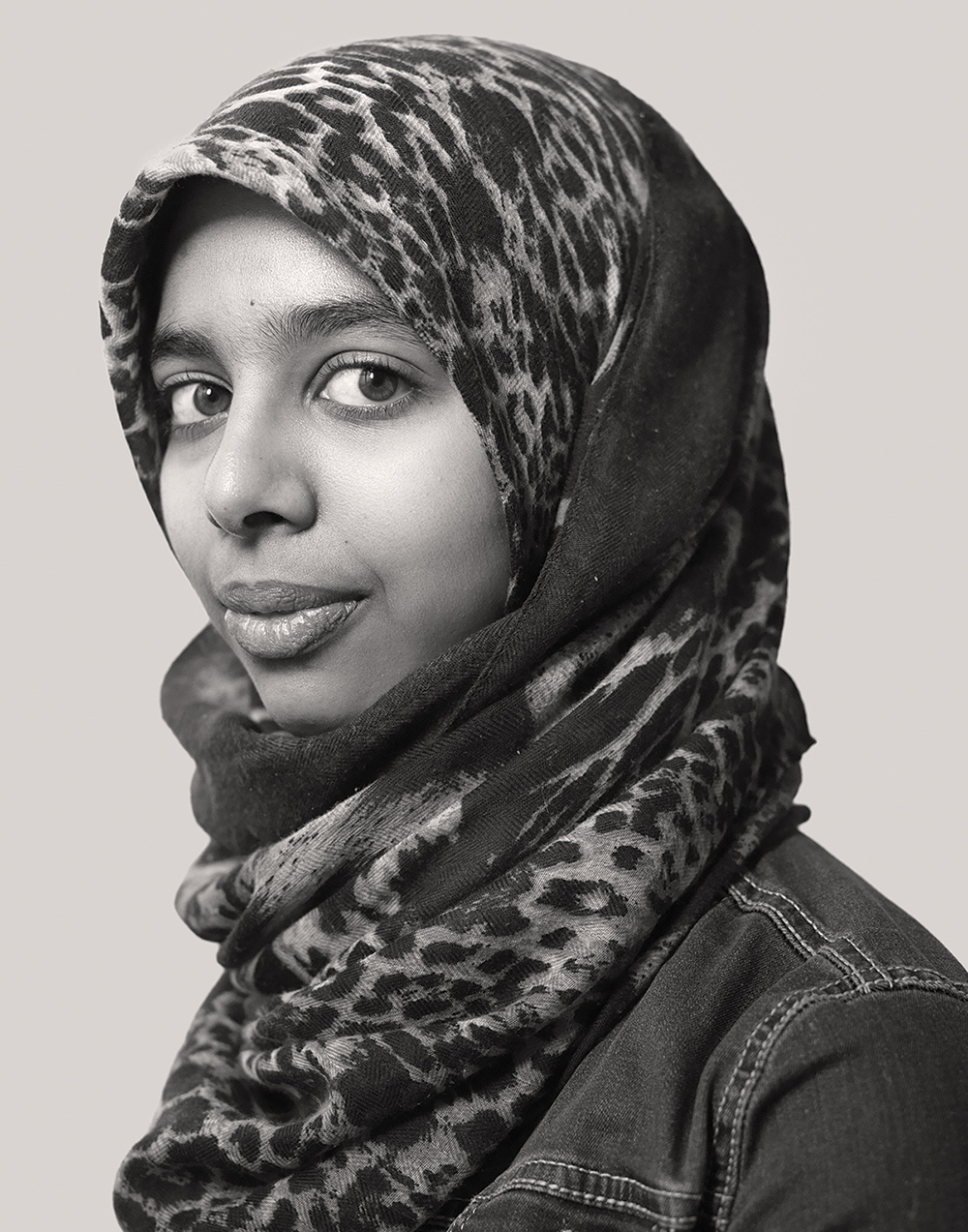
Romissaa Hassan, MRU Bachelor of Health and Physical Education — Physical Literacy student
Je Suis Hijabi
So there you have it, if Khan doesn’t think about it, and it’s not weighing heavily on Hanif’s or Chaudhry’s mind, why does the non-Muslim world seem so interested? So intrigued, in fact, that some Muslim women have felt the need to launch a public awareness campaign on the topic of what they wear.
Spearheaded by the Women’s Auxiliary of Ahmadiyya Muslim Jama’at, Je Suis Hijabi is in response to the group’s growing concern over religious intolerance in North America. Muslim women across Canada are visiting public spaces and campuses to promote awareness about their religion and the hijab.
Chaudhry, a University of Calgary Business and English alumna, explains that there’s “immense curiosity” about the head covering. She feels it’s imperative that Muslim females lead the discussion about how their own religion pertains to women.
“The MRU students were craving the dialogue and there was so much support,” she says.
Je Suis Hijabi is not the only group of Muslim women leading the conversation at Mount Royal. During Winter 2015 Semester, Romissaa Hassan — a Bachelor of Health and Physical Education — Physical Literacy major — felt as though the collective “temperature” in Calgary was changing in regard to how people saw her community.
“It was right around several incidents, the Paris attacks (2015) being a large part of the fear and concern around groups such as ISIS,” says the 19-year-old. “I think people were beginning to fear difference and we — women who wear the hijab — were, quite frankly, worried about becoming targets of hate crime.”
“Muslim parents worried about their children being alone and going to campuses alone at night. Maybe staying after hours by themselves to study,” adds Romissaa’s sister, Sara Hassan, 18, who will be starting her first semester at Mount Royal in Fall 2016.
Last year, the two women were taking Calgary Transit across the city with friends, one of whom was wearing a niqab, when they say they were verbally assaulted by a man who told the group to, amongst other predictable rhetoric, “go back to their own country.”
Romissaa says other passengers leaped to their defence, as did a transit officer, and the women were able to leave the situation safely. She has also experienced discrimination at Mount Royal.
“Someone wrote nasty graffiti about Muslims on some paper plates I was setting up for a meal we were going to have with the Muslim Students’ Association,” she says.
The Hassans were jarred by the experiences, but those moments have fuelled Romissaa’s conviction to do something to help educate others and curb the discrimination that lurks when you, literally, wear your religion for all to see.
She fights back with flower power.
As a member of the Muslim Students’ Association, she used the backdrop of Islamic Awareness Week 2015, an international initiative, to help run a campaign across campus that included making hundreds of origami roses inscribed with peaceful sayings from the Qur’an, then gifting the paper flora to passers-by while engaging students in conversation about Islam.
“I am proud of who I am and I plan to keep being me and doing what I need to do to make university a great experience,” she says.
During their undergrad experience, the aforementioned students have watched reports of terrorism in the name of their religion from across the globe. At the same time, Hanif has noticed a “constant” hum of polarizing “Islam-based” discussions debated in sound bytes and headlines “all the time, every time I turn the TV on or flick on the computer.”
These include the Canadian niqab debate of 2015, where a woman challenged the Conservative government’s ban on niqabs at citizenship ceremonies; viewpoints from various talking heads about the Syrian refugee crisis; and U.S. Republican front-runner (as of April 2016) Donald Trump’s infamous anti-Muslim comments.
“It’s not exactly an easy time to be a young Muslim,” says Sara.
The Mount Royal community, Muslim and non, is responding to the worldwide discussion around religion and violence, terrorism and Islamophobia, which is defined as dislike of or prejudice against Islam or Muslims, especially as a political force.
From professors penning books and completing research on the origins of fundamentalism, to students rising up and reaching out to educate fellow students and the campus community in a way they have never done before about the difference between violent extremism and Islam, the Mount Royal community asks itself: what is a university community’s role in exploring the issues?
For Hanif, the answer is simple.
“It’s about discussion and general education. The more educated we are as a community, the more we understand the world, different religions and world views. Then it becomes easier to accept each other,” she says.
Because whatever religion, culture and background students come from, university is a prime time to explore their own belief systems and question their own biases. And, of course, religious intolerance does not just target Muslims. The good news is, on Mount Royal’s campus there are plenty of positive grassroots projects cropping up that aim to help everyone just get along.
Visit campus and you might come across the Muslim Students’ Association, Power to Change (Christian), Secular Humanists of MRU, Catholic Christian Outreach, the LDS Student Association, Sikh Students’ Association, just to name a few.
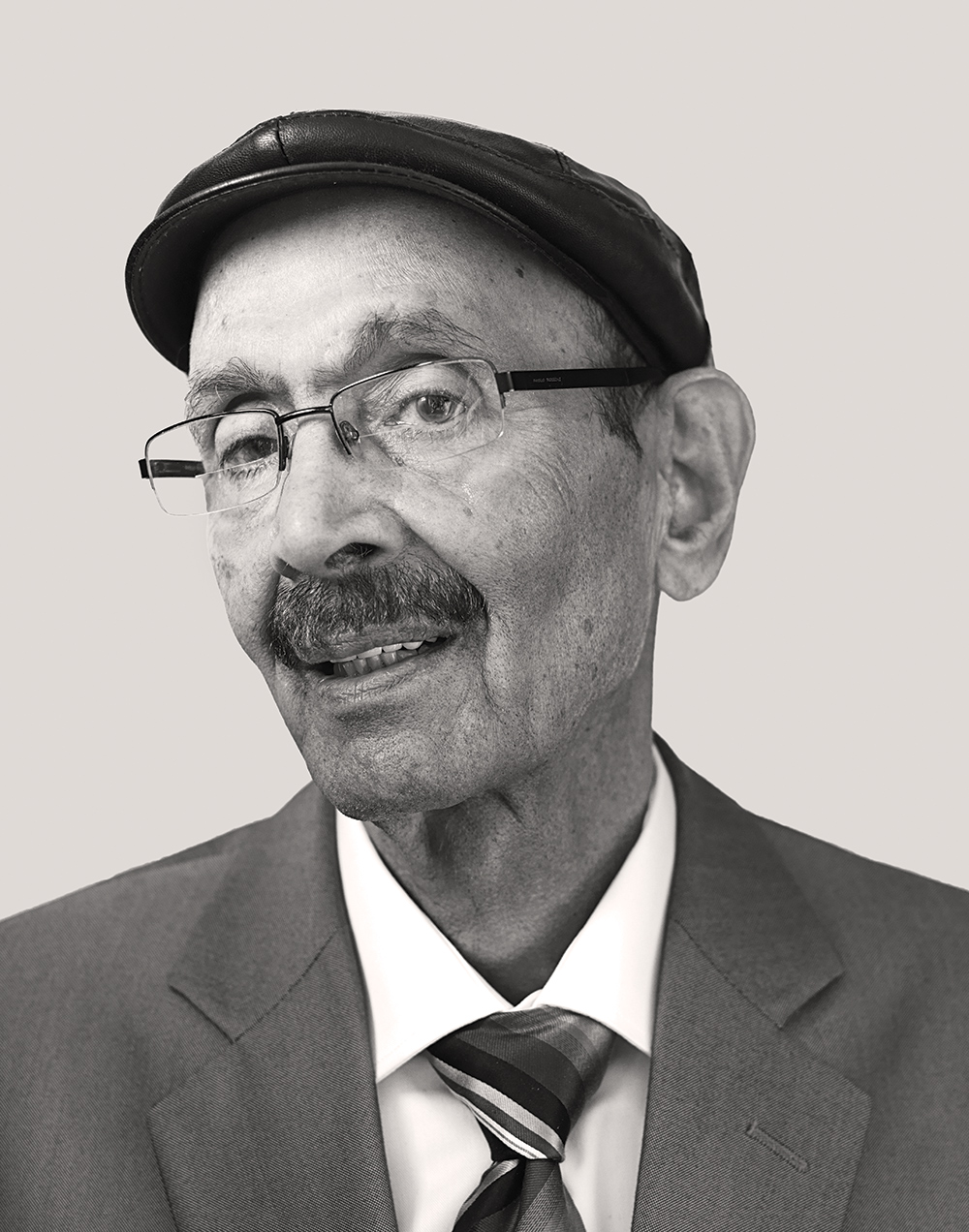
Mahfooz Kanwar, PhD, MRU professor emeritus (Sociology)
Student vulnerability?
Media reports of terrorist groups such as the Islamic State (ISIS), recruiting young members of the community, including those on campuses across North American, have been around for decades across Canada, the U.K. and the U.S., amongst other Western countries.
In 2014, converted jihadist Damian Clairmont was killed in Syria while reportedly fighting with ISIS. He was 22. After his death, the Calgarian’s mother, Christianne Boudreau, spoke out about the root causes of the radicalization of youth. Her son converted to Muslim as a teen, and according to an interview Boudreau did with the BBC (2015), later abandoned the faith and joined the “Islamic State’s jihad movement.”
According to the Globe and Mail’s March 21, 2016 piece: Hoping to escape stigma, mother of Islamic State militant leaves Canada, “it’s not known exactly how many young Canadians have left the country to immerse themselves in militant groups such as the Islamic State … Canada’s spy agencies estimate about 180 Canadians are involved in ‘threat-related activities’ with terrorist organizations overseas …” The same story reports there are estimates of about 14 or 15 of those youth being from Calgary, and seven or eight from Edmonton.
For students such as Khan, who feel “inundated” with media reports on recruitment of youth, the concern around young Muslims being zeroed in on by fringe groups is troublesome for multiple reasons.
“I am worried about young Muslims being targeted by ISIS for recruitment, but not any more than I’m worried about all young people being targeted by these groups. ISIS is not just recruiting Muslims — they will take anyone willing to follow,” he says.
“Fundamentalism has no religion.”
Mahfooz Kanwar, Mount Royal professor emeritus (Sociology) agrees. He has written several books on the subject, including Addiction to Religion (2015), which explores how religion — any religion — can become an addiction leading to fundamentalism and or fundamentalist-fuelled violence.
Kanwar is known for speaking his mind — whether or not his thoughts fit with the politically correct tone of the times — and warns that Muslims should not “put on their blinders” to the very real issues in their own community.
“If we do not acknowledge that there are problems within how those in the Muslim community interpret the Qur’an, it’s a mistake that can lead to making excuses for the seeds of fundamentalism,” he says.
Born in Pakistan, the former member of the Muslim Canadian Congress immigrated to Canada in 1966. He says while the problem of “Islamophobic hate” is “creating havoc in the Western Europe and America,” in Canada it is less prevalent.
“In my research, I’ve found about 14 Muslim fundamentalist organizations in Canada, America and the Western Europe. Unfortunately, those organizations almost invite Islamophobia in the Western World,” he says.
“The terrorists are known worldwide as murderers, beheaders, kidnappers of Muslim women, sellers of some of those women, rapists, and among other titles, misogynists.”
Kanwar says the key ingredient to religious violence is a lack of education and exposure to global views.
He adds there is a culture of ignorance and intolerance that aims to permeate mosques and Muslim populations in Canada, and that illiteracy and lack of general education is a leading factor in why individuals radicalize.
“There are billions of Muslims in the world and most of them are uneducated and semi-literate. That’s not an insult. It’s a fact. We are talking about a population globally that have not had the equivalent education of high school,” Kanwar says.
“All of my own children are university educated. I came here from Pakistan as an immigrant and I have completed my own PhD. This is not by accident. Access to, and encouragement to attend post-secondary, is the most important thing the Muslim community can do for the next generation. And the most important thing we can do is educate our youth in general. Education is what stops fundamentalist violence and thinking in its tracks and at its roots.”
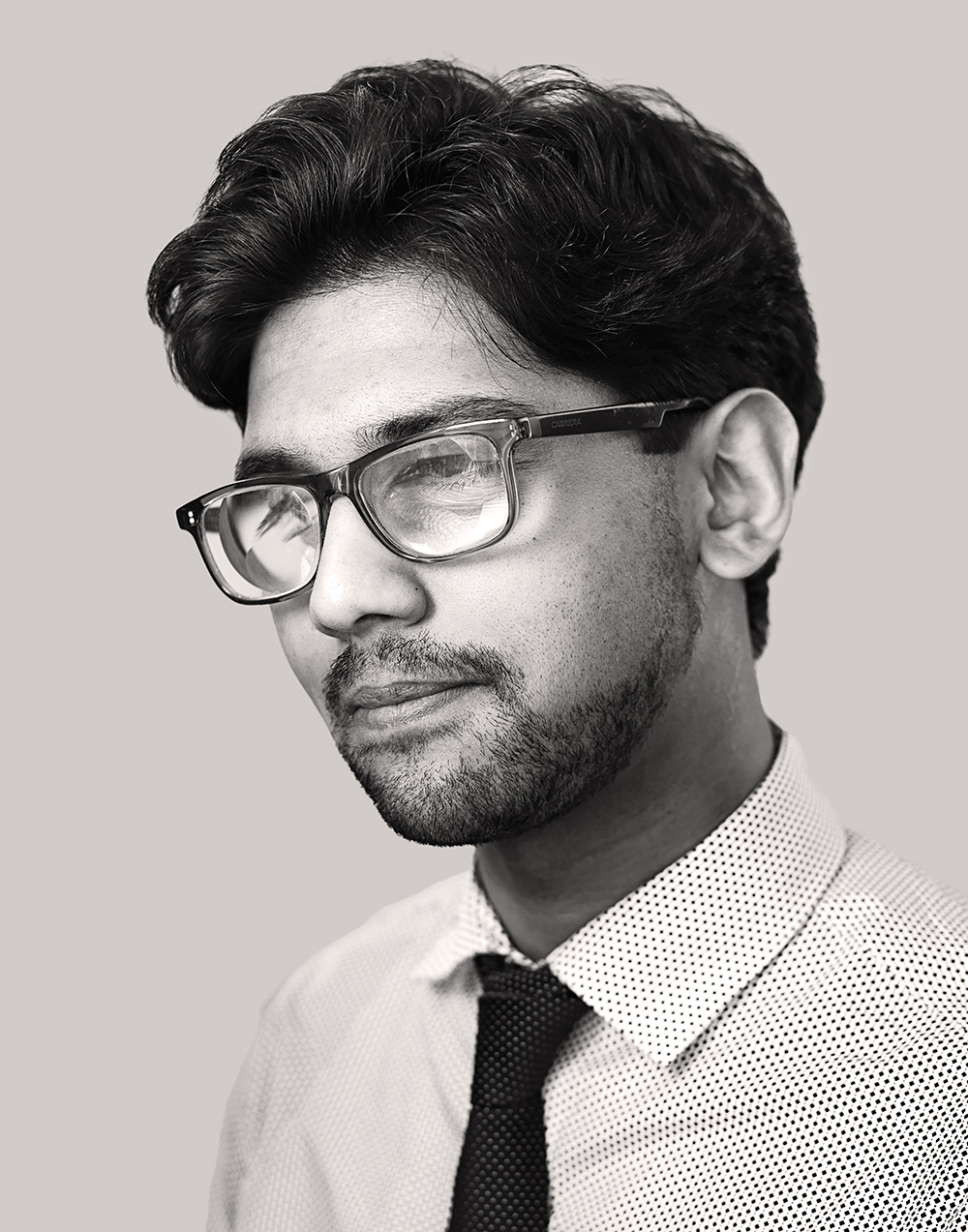
Danial Khan, MRU General Science student
Religion, the fourth of the “three Rs”?
For Michael Hawley, PhD, professor of Religious Studies in MRU’s department of Humanities, talking about religion in the classroom is just part of the gig. Students arrive in lecture halls to hear and contribute to the kind of discussion that ruffles feathers.
“Universities would not be doing our jobs if we weren’t having these sorts of conversations,” he says. “It’s very important that we’re training accountants and nurses and lawyers, but is that sort of training really separate from, or should it be at the expense of, a well-rounded humanities education?”
Hawley believes that graduates who are given a good humanities background during their bachelor degree experience — philosophy, history, religious studies and the like — come out on top.
“They are given the tools to go into a business meeting with global citizens and understand how to navigate those situations. Because we live in a world where we have to communicate across cultures, it’s indispensable to a person’s education to understand different ways of thinking.”
There are many provocative discussions on everything from Islamophobia to religion and violence, as well as media coverage of the like, going on daily in humanities, journalism, arts and other Mount Royal classrooms.
The Islamophobia Industry event took place in March 2016. Facilitated by the Multi-faith Chaplaincy, and using the book The Islamophobia Industry, a group of panellists (including local academics and journalists with a background on the topic) responded to author Nathan Lean’s claim that the tide of Islamophobia that is sweeping through Europe and North America is not a naturally occurring phenomenon, but an organized fear-inducing industry, intent on monster-making aimed at the Muslim population.
Hawley notes that it’s not just Muslim students who are negatively impacted by those who associate the religion with negative stereotypes or violence.
“The first person to be murdered after 9/11 was a Sikh gas station attendant, the perpetrator thought he was Muslim because of the turban — because of the beard — which tells us why we need education about religion,” he says.
The root causes of global terrorism are the subject of great discussion — particularly among religious scholars, such as Humanities faculty member Steven Engler, PhD, who is taking a keen interest in understanding the political and religious ideology of Salafi-jihadist groups such as al-Qaida and ISIS. Engler’s research formulates around the question: How can the actions of these radical groups diverge so far from the beliefs and practices of mainstream Islam? There’s no simple answer, but his explanation lies in a particular view of religious authorities — individual Salafi leaders present their own radical and idiosyncratic interpretations as being the Word of God, and they are able to do this because they ignore the moderating force of legal tradition.
However potentially problematic they might be, Hawley notes that discussions about religion and violence are an imperative part of the post-secondary discourse in classrooms.
“University is an ideal place to start talking about these sorts of issues — the good, the bad and the ugly — all sides of it,” he says, adding that he understands there is some resistance to conversations not only about violence and religion, but religion in general in “so-called secular, publically funded institutions.”
“We should be becoming more familiar with what other people do, and why they believe the things they believe, dress the way they dress.
“Because the outcome of that is a better understanding of whoever ‘we’ and ‘they’ happen to be. What it does is it makes the strange familiar. Very often, I think people speak out of or react out of fear or ignorance. The more exposure that one has to things that are different, the more normal it becomes.”
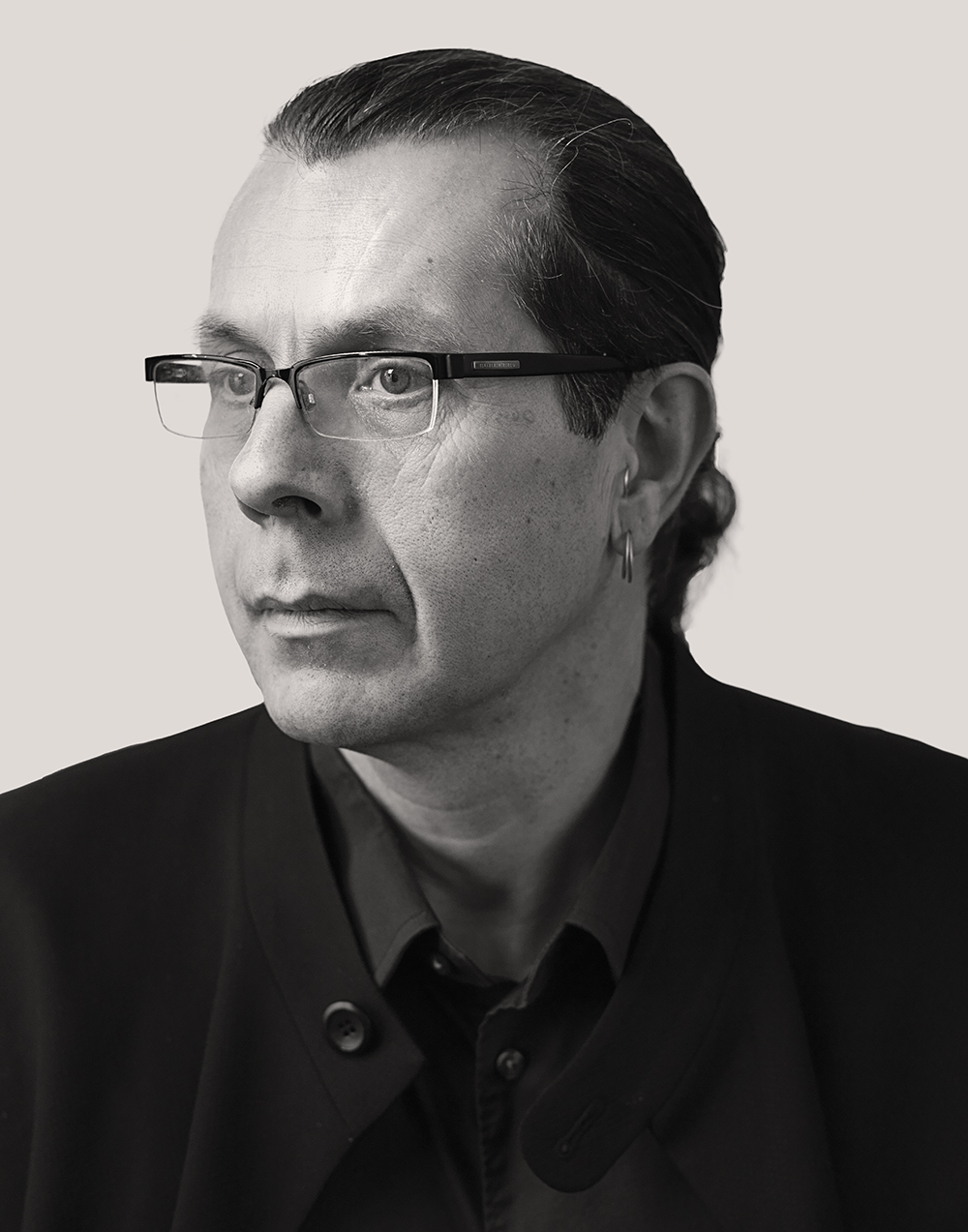
Michael Hawley, PhD, MRU professor of Religious Studies
Read more Summit
Where's it STEM from?
There's a lack of women enrolling in science, technology, engineering and math (STEM) post-secondary programs across Canada.
READ MORE


